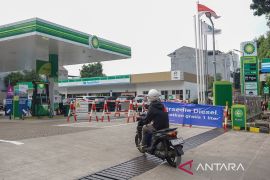"In theory, there are two conditions Pertamina EP must meet to achieve its production target for 2011, namely find new potential gas and oil blocks or basins and make a breakthrough in oil and gas exploration technology," Dr Iskanda Zulkarnaen, a geotechnology analyst at the Indonesian Institute of Sciences (LIPI), said here Wednesday.
He said the conventional exploration technology used so far could not optimally explore the available oil and gas basins in Indonesia.
"There are 60 basins in Indonesia but only few of them prove to hold viable oil and gas reserves. But with new technology it will be possible to find reserves not only in the basins but also in any existing sub-basins," Iskandar said.
Therefore, a new exploration concept was essential for Pertamina EP to find hidden oil and gas potentials in the available basins, he said.
However, new technology might not be cheap and be kept by certain parties to gain more profit from the oil and gas sector, he said.
"If Pertamina EP could achieve its production target, it would indirectly reduce the country`s need to import oil and gas and make it easier for the company to meet the domestic demand for oil and gas," he said.
The support of the government, local administrations and local residents around any newly discovered basins was needed for Pertamina EP to reach its oil and gas production target, he said.
Previously, after exceeding this year`s production target, PT Pertamina EP was ready to increase oil production from 130,200 barrels per day in 2010 to 132,000 barrrels per day next year.
Its president director, Salis Aprilian, said on Thursday (Dec 30) that crude and condensate production in 2011 was expected to reach 132,000 barrels per day or a rise by 1.4 percent from 130,000 barrels per day in 2010.
"However because of a natural decline of 18 percent, production actually increased by 20 percent," he said.
The quite steep drop happened because most of the oil wells were old and some of them had even produced 30 percent less, he said.
"So, it is already quite hard to maintain the present level of production," he said.
Moreover, Salis said, gas production in 2011 was expected to reach 1,095 million cubic feet per day (MMSCFD) up from 1,054 MMSCFD in 2010.
(T.KR-AES/HAJM/H-YH/P003)
Editor: Priyambodo RH
Copyright © ANTARA 2011











